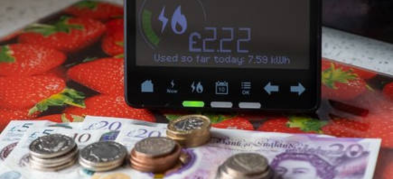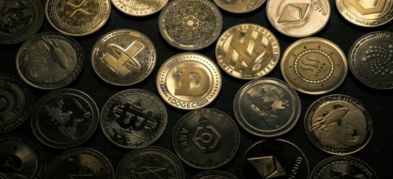Important Information
This website is managed by Ultima Markets’ international entities, and it’s important to emphasise that they are not subject to regulation by the FCA in the UK. Therefore, you must understand that you will not have the FCA’s protection when investing through this website – for example:
- You will not be guaranteed Negative Balance Protection
- You will not be protected by FCA’s leverage restrictions
- You will not have the right to settle disputes via the Financial Ombudsman Service (FOS)
- You will not be protected by Financial Services Compensation Scheme (FSCS)
- Any monies deposited will not be afforded the protection required under the FCA Client Assets Sourcebook. The level of protection for your funds will be determined by the regulations of the relevant local regulator.
Note: Ultima Markets is currently developing a dedicated website for UK clients and expects to onboard UK clients under FCA regulations in 2026.
If you would like to proceed and visit this website, you acknowledge and confirm the following:
- 1.The website is owned by Ultima Markets’ international entities and not by Ultima Markets UK Ltd, which is regulated by the FCA.
- 2.Ultima Markets Limited, or any of the Ultima Markets international entities, are neither based in the UK nor licensed by the FCA.
- 3.You are accessing the website at your own initiative and have not been solicited by Ultima Markets Limited in any way.
- 4.Investing through this website does not grant you the protections provided by the FCA.
- 5.Should you choose to invest through this website or with any of the international Ultima Markets entities, you will be subject to the rules and regulations of the relevant international regulatory authorities, not the FCA.
Ultima Markets wants to make it clear that we are duly licensed and authorised to offer the services and financial derivative products listed on our website. Individuals accessing this website and registering a trading account do so entirely of their own volition and without prior solicitation.
By confirming your decision to proceed with entering the website, you hereby affirm that this decision was solely initiated by you, and no solicitation has been made by any Ultima Markets entity.
I confirm my intention to proceed and enter this websiteWhat Quarters Are Worth Money?
Are you wondering what quarters are worth money? You’re not alone. Coin collectors and investors alike are hunting for rare and valuable quarters that can be worth hundreds—or even thousands—of dollars. This expert guide reveals the most valuable quarters, what year quarters are worth money, how to spot rare errors, and how to sell your coins smartly.
Why Rare Quarters Are Worth Money
Rare quarters are valuable due to a mix of low mintage, historical significance, minting errors, and demand from collectors. Coins struck in limited numbers, or those with flaws such as double-die errors or off-center prints, can fetch premium prices.
Key factors that drive value:
- Low mintage numbers (limited supply)
- Mint errors (double die, clipped planchet, etc.)
- High-grade condition (MS65 or higher)
- Historical importance (key dates)
What Year Quarters Are Worth Money?
Here are some of the most valuable quarters to watch for:
| Year | Mint Mark | Type | Estimated Value (High Grade) |
| 1916 | D | Standing Liberty | $15,000+ |
| 1932 | D | Washington | $6,000+ |
| 1932 | S | Washington | $5,000+ |
| 1950 | D/S Overmint Error | Washington | $800+ |
| 1964 | Any | Silver | $10-$150 |
| 2004 | D (Wisconsin Leaf Error) | State Quarter | $300-$1,000+ |
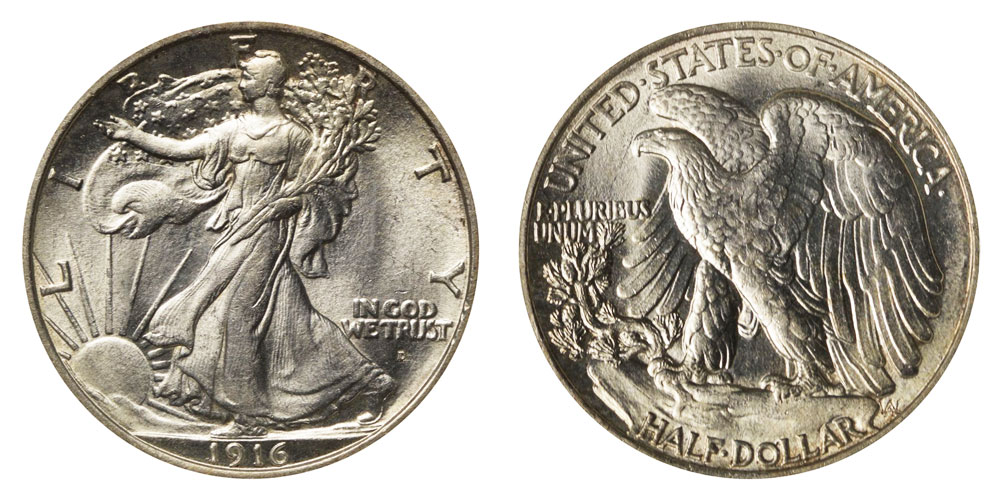
Look out for silver quarters (pre-1965) and error quarters from modern series like America the Beautiful or State Quarters.
Quarters from specific years are worth money primarily because of their scarcity, silver content, or unique minting errors. For example:
- 1916-D Standing Liberty Quarter: This coin had a very low mintage (only about 52,000 made), making it extremely rare and highly sought after by collectors.
- 1932-D and 1932-S Washington Quarters: These were the first years of the Washington quarter series and had very low production runs.
- 1950-D/S Overmint Error: Mistakes like a “D” mint mark stamped over an “S” are rare and collectible.
- Pre-1965 Quarters: All quarters minted before 1965 contain 90% silver, giving them intrinsic melt value even if worn.
- Modern Errors (e.g., 2004 Wisconsin “Extra Leaf”): Some quarters have visible mistakes like extra design elements, making them valuable due to their rarity.
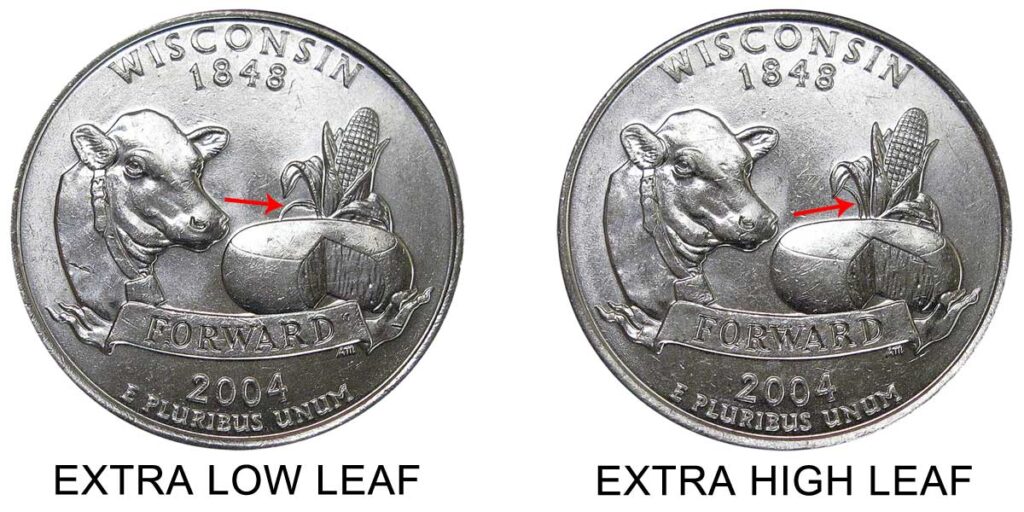
These factors like limited supply, precious metal content, and unexpected errors, create strong demand among collectors and investors, driving up prices for these specific years.
Top Modern Rare Quarters Worth Money
Modern quarters can also be valuable for several reasons:
- Low Mintage: Coins like the 2019-W Quarters were released in small quantities from the West Point Mint, making them rare in circulation.
- Minting Errors: The 2004 Wisconsin State Quarter is famous for its “extra leaf” error, a mistake during minting that created two distinct and collectible variations.
- Die Chips and Defects: Coins such as the 2022 Maya Angelou Quarters with visible die chips have gained value due to their unintentional uniqueness.
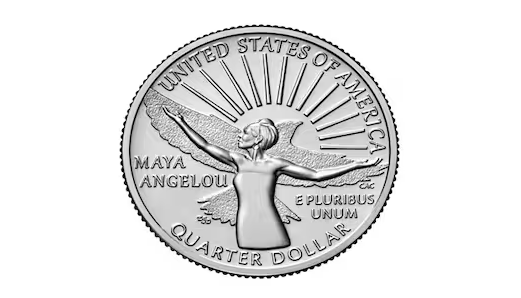
These coins are still found in circulation and could be worth $50–$1,000 depending on condition.
Minting errors and unique mint marks can significantly increase a quarter’s value. These quirks are often unintentional, making them rare and highly sought after by collectors.
Top Coin Errors That Increase Value
- Double-Die Errors: Caused by a misalignment during the engraving process, resulting in doubled images or text (notably on the 1955 Lincoln cent and seen in quarters too).
- Off-Center Strikes: When the coin blank isn’t correctly aligned, part of the design is missing—greater off-center percentage = higher value.
- Clipped Planchets: Irregularly shaped coins due to a faulty blank cut; these stand out and can fetch high premiums.
- Die Cracks/Chips: Minor cracks in the die can leave raised lines or blobs on coins, especially in modern quarters like the 2022 Maya Angelou issue.
- Strike-Through Errors: Occur when debris or grease interferes with the die strike, leaving an unusual texture or mark.
Valuable Mint Marks to Watch For
- “D” – Denver Mint: Common but can hold value when paired with key dates.
- “S” – San Francisco Mint: Usually proof coins, which are struck with high precision and mirror-like surfaces.
- “W” – West Point Mint (2019 only): Extremely low mintage (2 million per design), making these quarters very valuable and collectable.
These errors and rare marks weren’t meant to exist, making them numismatic anomalies. Because they’re difficult to find, collectors are willing to pay a premium—sometimes hundreds of dollars depending on condition and rarity.
How to Grade and Sell Valuable Quarters
Understanding a coin’s grade is essential—it tells you how well the coin has been preserved, and it directly affects how much it’s worth.
How to Grade Your Quarters
- Use a magnifying glass to check for scratches, wear, or shine.
- Compare your coin to grading charts available from trusted organizations like PCGS or NGC.
- Consider professional grading for high-value coins. It gives credibility and boosts resale value.
Common coin grades
- MS65 or higher (Mint State): Like new, never used—very valuable.
- AU (About Uncirculated): Almost perfect with tiny signs of wear.
- XF (Extremely Fine): Light wear, but still sharp detail.
- G (Good): Heavy wear, but design is visible—less valuable.
Where to Sell Your Valuable Quarters
Once you know your coin’s grade and potential value, here are the best places to sell:
- Heritage Auctions: Best for high-value coins with proper grading.
- Local Coin Shops or Dealers: Quick sales and professional opinions.
- Coin Shows: Network with collectors and sell directly.
- Online Coin Marketplaces: Reach serious buyers looking for rare pieces.

What Quarters Are Rare and Worth Money
1916-D Standing Liberty Quarter
- Why it’s rare: Only 52,000 minted, the lowest for any U.S. quarter.
- Why it’s valuable: Scarcity + historic design changes make it a key date for collectors.
1932-D & 1932-S Washington Quarters
- Why they’re rare: First year of the Washington quarter series; both had low mintage (less than 500,000 each).
- Why they’re valuable: Historic significance and strong demand among Washington quarter collectors.
1950-D/S Overmint Error Quarter
- Why it’s rare: A rare overmint mark where an “S” was struck over a “D.”
- Why it’s valuable: Error coins attract strong interest and add uniqueness to any collection.
2004-D Wisconsin State Quarter (Extra Leaf)
- Why it’s rare: A die flaw created an extra leaf on the corn husk—only a few entered circulation.
- Why it’s valuable: Popular and recognizable error among modern coin collectors.
2019-W Quarters
- Why they’re rare: Only 2 million of each design were released by the West Point Mint—extremely low by modern standards.
- Why they’re valuable: Scarcity + public treasure-hunt appeal made them instant collector favorites.
Conclusion
Collecting or investing in valuable quarters can be both fun and profitable. From vintage silver quarters to modern mint errors, there are countless opportunities to discover hidden gems in your pocket change.
For more financial insights and collector tips, trust Ultima Markets, we are your source for smart investing and rare asset strategies.
Disclaimer: This content is provided for informational purposes only and does not constitute, and should not be construed as, financial, investment, or other professional advice. No statement or opinion contained here in should be considered a recommendation by Ultima Markets or the author regarding any specific investment product, strategy, or transaction. Readers are advised not to rely solely on this material when making investment decisions and should seek independent advice where appropriate.



